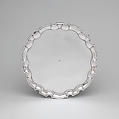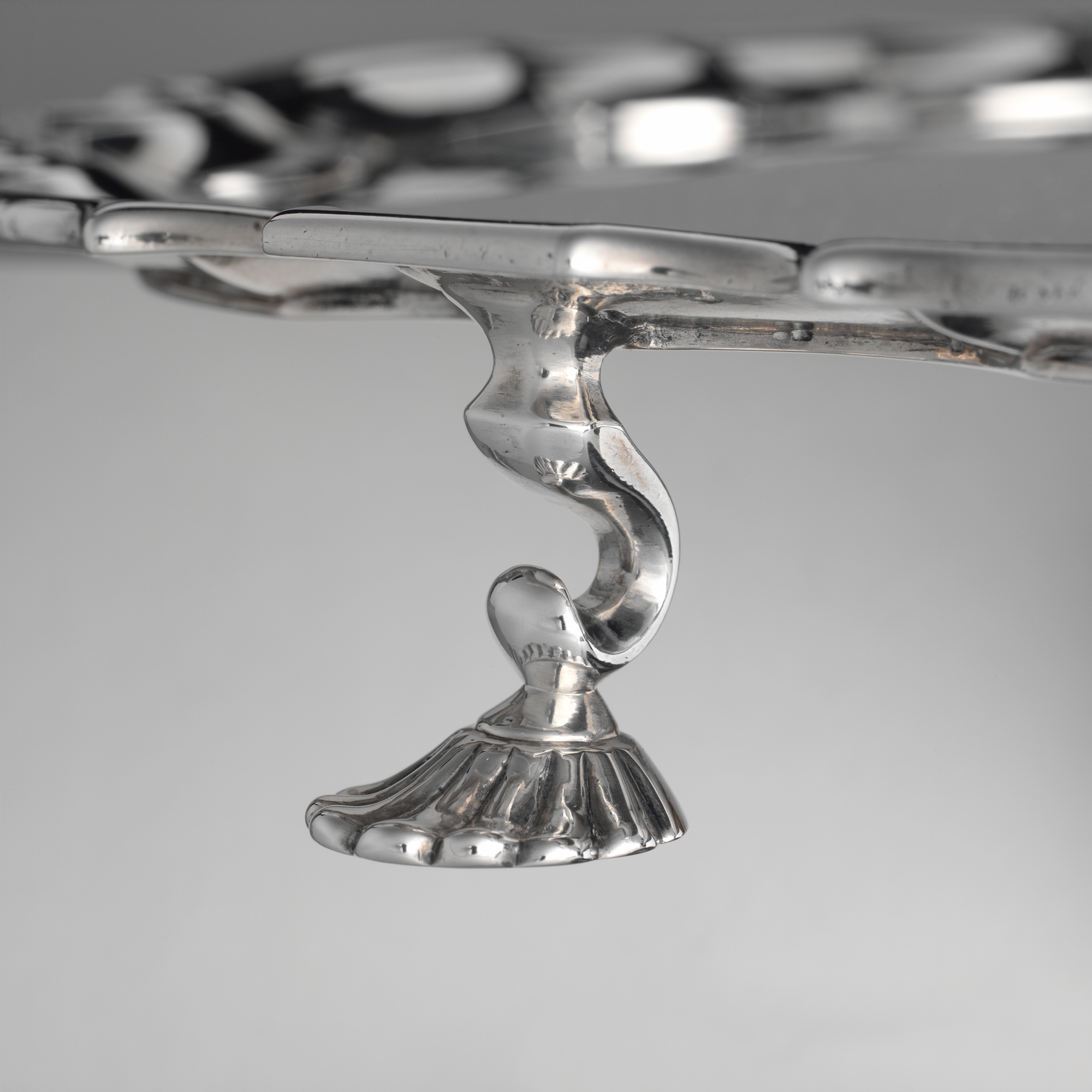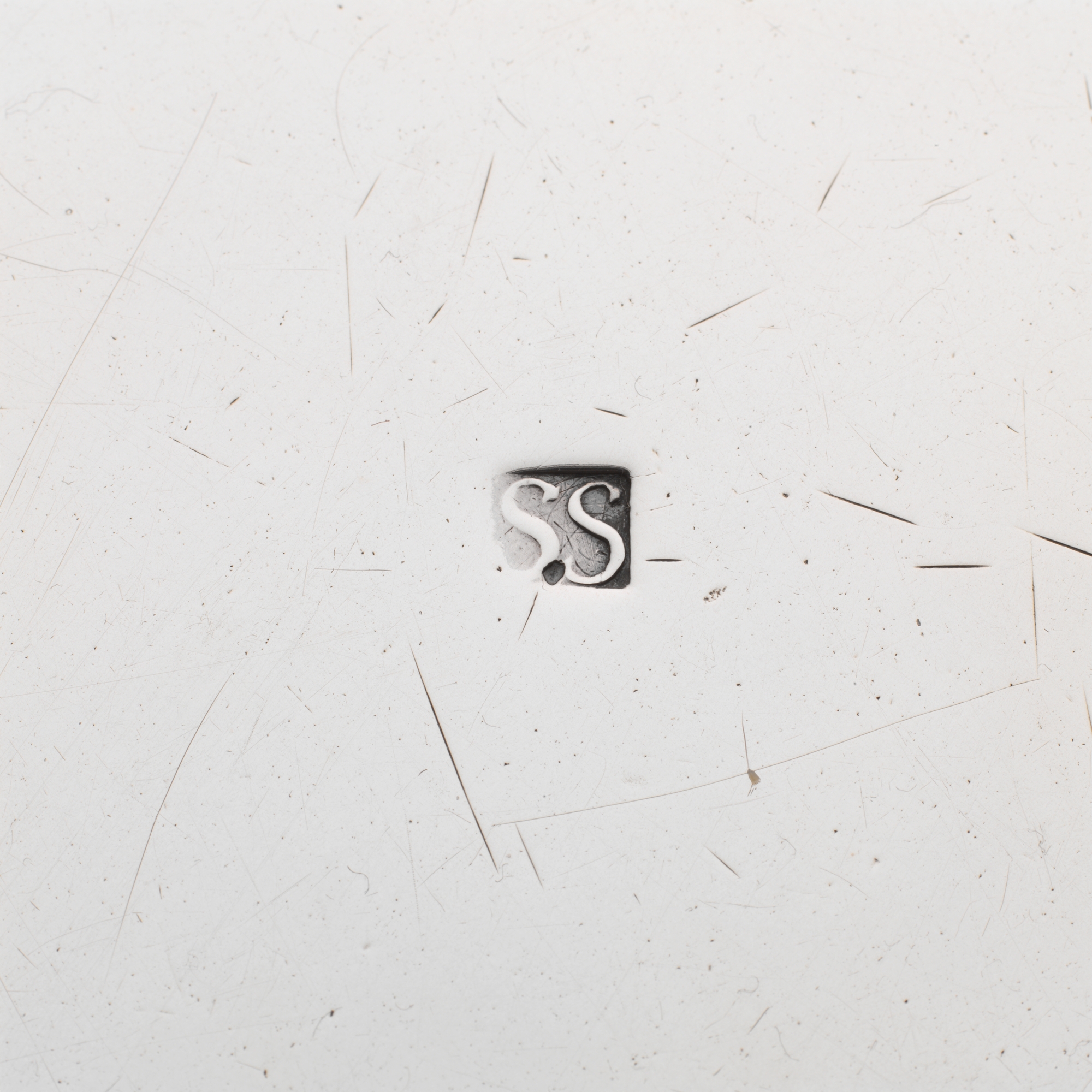Salver
Simeon Soumaine American
Used in various capacities for the service of food and drink, salvers took their place on the tea table. Smallsized salvers, sometimes called waiters, were occasionally made en suite with flatbottomed coffeepots as protection for fine wood tables. Popular through the middle decades of the eighteenth century was the socalled piecrust border seen here. These borders were usually raised as one with the flat surface of the salver, but in this case the rim was made separately and soldered to the flat plate. A smaller salver of this type, also marked by Soumaine (35.68.4), is constructed in a similar fashion.
When acquired by the Museum in 1933, this salver was said to have belonged originally to John Thurman (b. 1695), a baker and merchant who in 1720 became a freeman, an individual granted the privilege to open a retail shop, to vote, and to hold political office. An estate inventory for Thurman taken on August 18, 1778, lists a sizable collection of plate, but no salver is mentioned, and no documentation has come to light to confirm this provenance.
Due to rights restrictions, this image cannot be enlarged, viewed at full screen, or downloaded.
This artwork is meant to be viewed from right to left. Scroll left to view more.





